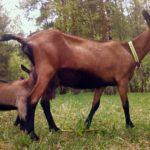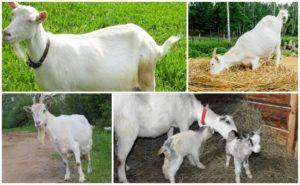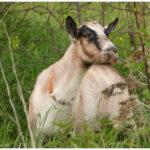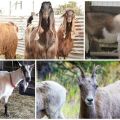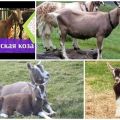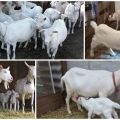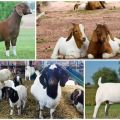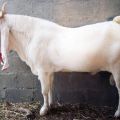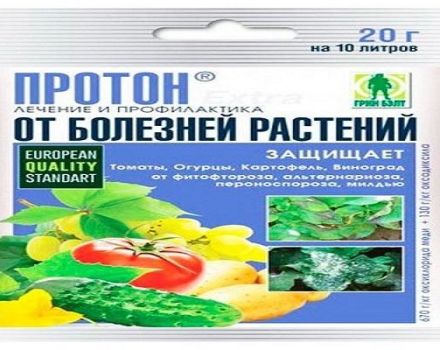Description and characteristics of alpine goats, breeding features
Alpine is a unique breed adapted to life and food in harsh climatic conditions. Caring for a calm and unpretentious Alpine goat is not difficult, maintenance does not require special skills. The breed belongs to dairy, animals are valued for high milk yield, high-quality milk without a specific odor, duration of the lactation period, easy milking process.
History of the Alpine goat breed
The history of the breed began in France, in the Savoy region, which is located in the foothills of the Alps. However, this region connects the borders of three European countries: France, Switzerland, Italy. Therefore, it is generally accepted that Alpine goats are not only French, but also Swiss. Active breeding of the breed in France began at the beginning of the 20th century. Until that time, the rock, adapted to live in highlands, eat pasture, drink spring water, was bred by farmers exclusively in the Savoy region and neighboring Swiss regions.
The breed standard, describing the appearance and productivity, was compiled by French breeders in 1930. But a decade before that, 22 individuals were transported to the United States, where, on their basis, breeders received an American intra-breed variety.
Description and characteristics of the animal
The breed standard by which a good individual is selected is shown in the table.
| Physical features | Standard parameters |
| head | elongated, not strongly flattened |
| horns | flat, with a cavity inside and strong bone tissue |
| neck | middle length |
| ears | even, erect |
| chest | rounded, slightly convex |
| stomach | rounded |
| limbs | medium length, strong, sinewy, in proportion to the body |
| wool | short, with a dense undercoat, not suitable for use in furriers |
| height at the withers | male - 85-90 cm, female - 70-80 cm |
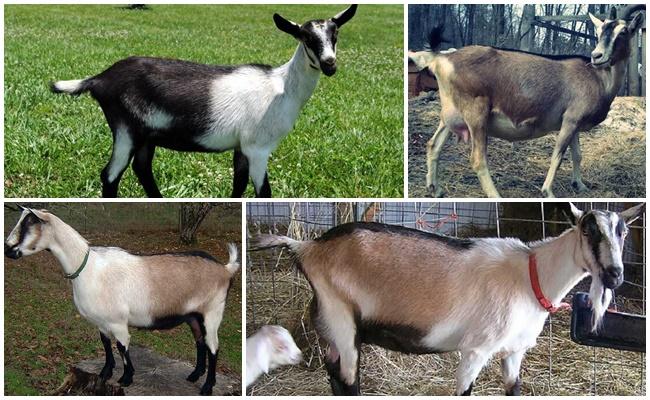
Alpine goat colors are varied:
- kunavar - the front half of the body is black, the back is white;
- white-necked - the neck and shoulders are white, the rest of the body is black or gray;
- red-necked - the neck and shoulders are brownish-red, the rest of the body is black or dark brown;
- paid - the body is covered with spots or specks;
- sandgou - white spots on the black body;
- chamois - the body is red, red-brown or brownish-red, the head and neck are covered with black specks, the limbs are black, there is a black stripe along the vertebral column;
- magpie - the head is white, and the body is decorated with spots;
- bicolors and tricolors are bicolor and tricolor individuals.
Alpine goats are calm, friendly, independent, do not require constant control and special care from the owner. They get along without problems with other breeds of goats, as well as with other non-aggressive domestic animals. Alpine pets are active, strong, lively, hardy. It is not a problem for them to walk several kilometers in search of food. On grazing, animals behave playfully, playfully, thanks to which they are not subject to obesity.
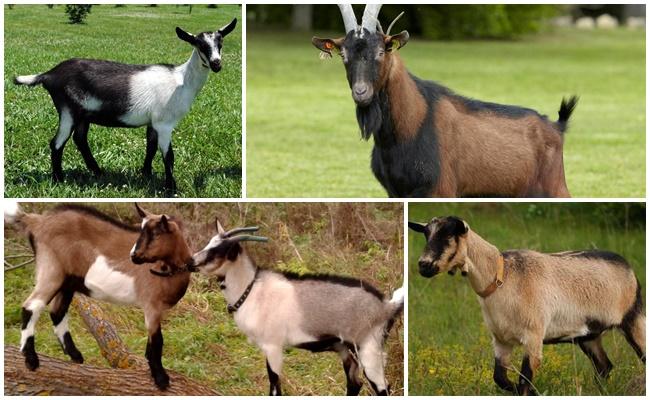
Alpine goats are one of the most productive goats. The average annual productivity of one female is 1.5 tons of milk. But individual record-holders are capable of producing 2 tons. Average daily productivity is 4.5 liters.
Milk has an increased protein content - 3.1% and milk fat - 3.5%. The taste of the product is sweet, there is no specific goat smell. The milk of Swiss goats is used to make baby food, cheese, and cottage cheese.
Advantages and disadvantages
Alpine is one of the most popular breeds among European and American farmers.
Rules for keeping and caring for the breed
Convenience of keeping alpine pets - in the absence of the need for capital construction. One goat needs a space of 3-4 m2... It is not necessary to insulate the building; if desired, you can use mineral wool. But drafts are unacceptable, there should not be a single gap in the walls. Goats tolerate low temperatures without problems, but are sensitive to drafts and dampness, get sick with pneumonia, accompanied by an intense cough. The building must be equipped with a good ventilation system; for this, a couple of ventilation holes are made in the walls.
The barn is cleaned once a week. The litter should always be dry and clean. Males are kept separate from females and pups. The plank floor must be raised to a height of about 20 cm above the ground, lined with straw. Do not keep goats on bare ground, their hooves sensitive to dirt and dampness will suffer from this. Since the alpine rock is rocky, its representatives prefer to sleep on a hill. Therefore, sleeping plank shelves are erected in the stable at a height of 50 cm from the floor.
How to feed alpine goats
Grazing is a must. Moreover, goats prefer dry and fiber-rich food. They willingly use, in addition to grass, shrub branches, young tree shoots, dried foliage, thin bark. Therefore, the farmer will either have to find a pasture where such food is available, or additionally treat the goats with twigs and bark.
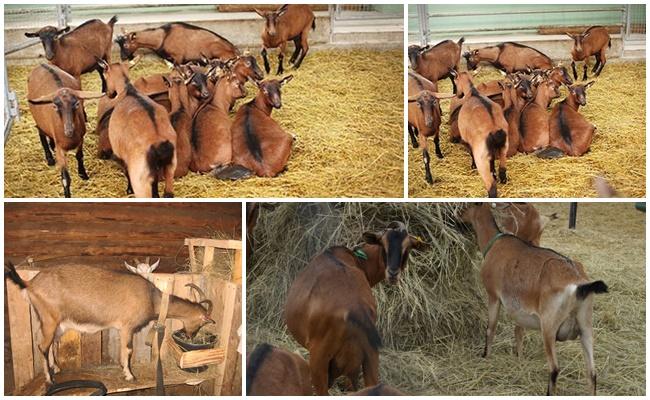
In winter, hay becomes the main source of fiber, but in summer it is also put in the trough. One goat eats 55-60 tightly filled 50 kg bags of hay per year.
Hay in the diet must be combined with grain feed, cereal mixtures. In winter, the diet is supplemented with concentrates, their daily amount is 250-300 g per individual. Lumps of salt for licking are placed near the drinking bowl.
Alpine goat water should be crystal clear.Representatives of the breed are extremely squeamish about drinking; they will not drink stagnant water, even if it has been standing for only a day and not contaminated. Therefore, farmers have to either change the water 2-3 times a day, or install automatic drinkers.
Breeding features
Females become sexually mature by 6 months of age. But a goat weighing at least 35 kg is selected for mating. The optimal age for first mating is at least 9 months, maximum 1.5 years. A goat occurs during estrus, which lasts about a week. If the male is not intended for breeding work, then he is castrated up to 3 months of age.
Alpine goats can be produced in several ways:
- Artificial insemination is a popular method in large livestock farms. The procedure is long, expensive, but comfortable.
- Manual mating. The selected male and female are driven into a separate fence, where they mate. The method is optimal for obtaining purebred offspring with the required qualities.
- Free mating. Animals are in a common fence, mating without human control.
Females carry offspring for 5 months. Labor is usually easy and requires no human intervention. It is only necessary to wash the udder with warm water before the birth process. Alpine goat breeds 1-4 cubs. Newborn kids immediately begin to feed on mother's milk, which strengthens their immunity. The offspring can be left with the mother for a long time, but this will reduce milk yield.
Possible diseases
Alpine goats have strong immunity, no hereditary diseases. But representatives of the breed can catch an infection, get sick due to improper care.
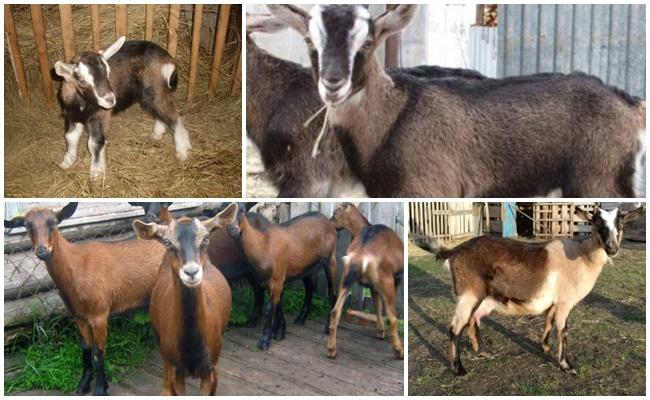
Diseases dangerous for goats:
- Brucellosis is an infectious pathology that is dangerous to humans. Therefore, contaminated milk and meat must be disposed of. Poor quality grain feed can be a source of infection.
- Pleuropneumonia is an infectious disease into which pneumonia flows. Occurs in goats kept damp at low temperatures.
- Agalactia is milklessness of infectious origin. The infection affects the udder and joints. Pregnancy often ends in miscarriage.
- Hoof pathologies caused by poor care. The sick animal is limping, sometimes it cannot even get to its feet.
Alpine goats in Russia
Russian farmers love Alpine goats for their unpretentiousness and high milk yield, but they mainly buy them abroad. In our country, you can buy an animal only in private nurseries, since the breed is not yet widespread.
The purchase must be approached with caution so as not to run into an unscrupulous breeder. You should look for a reputable nursery, read the reviews. Arriving at the seller's farm, you should try the milk, see what conditions the livestock is kept in.
It is worth paying attention to the following alpine goat nurseries:
- The farm "Kozinsky". Samara Region, Stavropol District, Aleksandrovka village.
- LPH "Forest Land". Nizhny Novgorod.
- LPH "Golden Compound". Tula region, Bogoroditsky district, village Krasny Posad.
- LPH "Senavlana". St. Petersburg, metro Admiralteyskaya.
For an alpine pet you will have to pay a considerable amount. A goat for breeding will cost 40-50 thousand rubles. For a purebred female in nurseries they ask for 25-30 thousand. You can buy a kid for 5-8 thousand.




